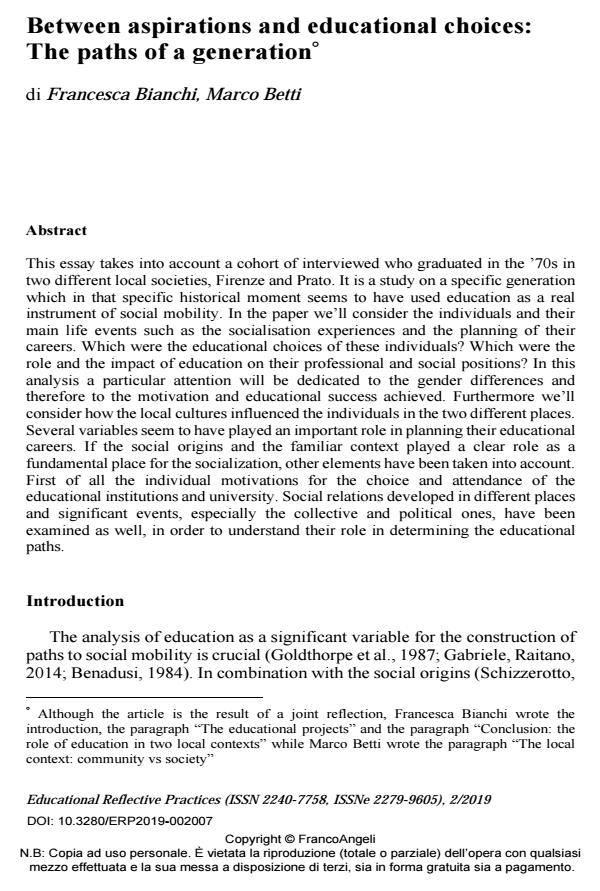Between aspirations and educational choices: The paths of a generation
Journal title EDUCATIONAL REFLECTIVE PRACTICES
Author/s Francesca Bianchi, Marco Betti
Publishing Year 2020 Issue 2019/2
Language English Pages 24 P. 114-137 File size 269 KB
DOI 10.3280/ERP2019-002007
DOI is like a bar code for intellectual property: to have more infomation
click here
Below, you can see the article first page
If you want to buy this article in PDF format, you can do it, following the instructions to buy download credits

FrancoAngeli is member of Publishers International Linking Association, Inc (PILA), a not-for-profit association which run the CrossRef service enabling links to and from online scholarly content.
This essay takes into account a cohort of interviewed who graduated in the ’70s in two different local societies, Firenze and Prato. It is a study on a specific generation which in that specific historical moment seems to have used education as a real instrument of social mobility. In the paper we’ll consider the individuals and their main life events such as the socialisation experiences and the planning of their careers. Which were the educational choices of these individuals? Which were the role and the impact of education on their professional and social positions? In this analysis a particular attention will be dedicated to the gender differences and therefore to the motivation and educational success achieved. Furthermore we’ll consider how the local cultures influenced the individuals in the two different places. Several variables seem to have played an important role in planning their educational careers. If the social origins and the familiar context played a clear role as a fundamental place for the socialization, other elements have been taken into account. First of all the individual motivations for the choice and attendance of the educational institutions and university. Social relations developed in different places and significant events, especially the collective and political ones, have been examined as well, in order to understand their role in determining the educational paths.
Francesca Bianchi, Marco Betti, Between aspirations and educational choices: The paths of a generation in "EDUCATIONAL REFLECTIVE PRACTICES" 2/2019, pp 114-137, DOI: 10.3280/ERP2019-002007